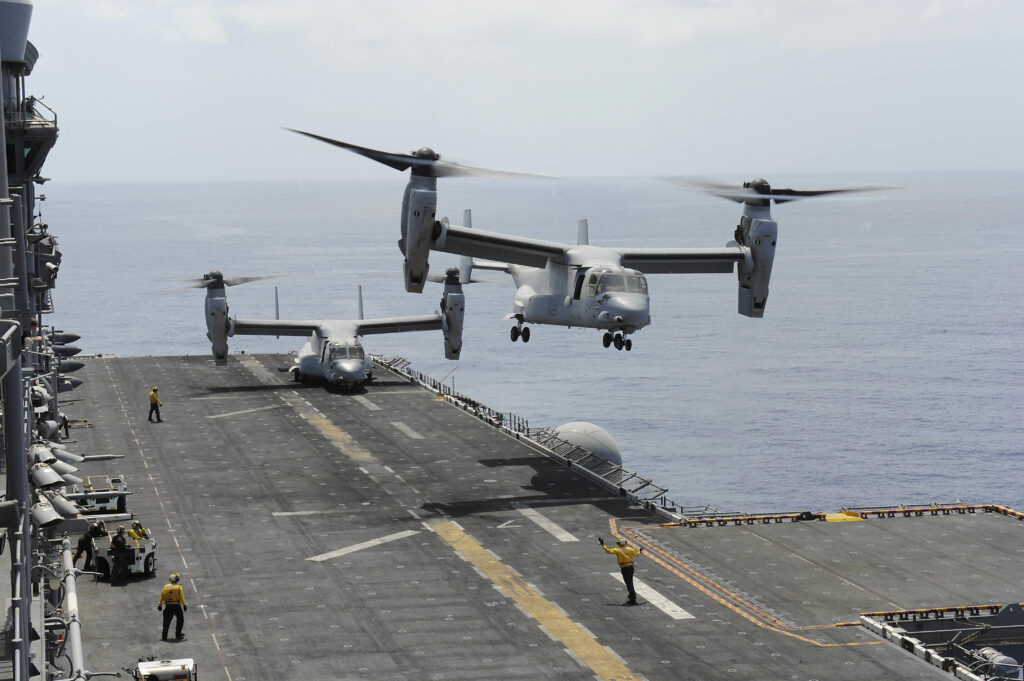
ARLINGTON, Va. — The Marine Corps continues to tweak its Force Design 2030, adjusting the number of tube artillery batteries, the number of MV-22B squadrons, the operation of a Marine Littoral Regiment and the size of an infantry battalion.
Under Force Design 2030, the Marine Corps is divesting itself of some force structure and weapon systems and building others to reshape the Corps to be more capable of operating inside a threat zone in the current era of great power competition.
Brig. Gen. Mark Clingan, assistant deputy commandant for Combat Development and Integration and deputy commanding general of Marine Corps Combat Development Command, speaking April 21 in a webinar of the National Defense Industrial Association, said the Corps is looking at retaining more tube artillery batteries, choosing to retain seven batteries instead of five.
The tube artillery batteries operate M777 155mm howitzers.
Clingan also said the Corps will continue to field 16 Marine Medium Tilt-rotor Squadrons rather than reduce to 14 squadrons. However, the number of MV-22B Osprey aircraft in each squadron would decrease from 12 to 10 aircraft. One squadron, VMM-166, was deactivated last year.
He said the Corps’ force design plans “probably weighted too much on the Marine Littoral Regiment and did not really acknowledge that to appropriately be able do the recon/counter-recon fight is going to require the full complement and scope of the Marine Air-Ground Task Force, and so MLRs are singular units but are still going to be very much a part of reaching back and employing the resources of the entire MAGTF.
Regarding the design of the MLR, Clingan said, “we probably focused too much on lethality without taking enough look or considering specifically the requirement to ‘sense and make sense,’ the mobility and maneuverability and also the need for deception. Now we’re making refinements to that as well.
“Our initial thoughts were that MLR units would be sourced through UDP [the Unit Deployment Plan] rotation and now we’re opening the aperture and think, maybe, some PCS [permanent change of station] personnel may be more suited to the terms of the units,” he said.
The Corps has one MLR on strength, the 3rd MLR. Two more MLRs are planned in the future: the 12th and probably the 4th.
Regarding the size of an infantry battalion, “we initially thought we would be cutting that from about 896 [Marines and Sailors] down to 735,” he said. Noting the need to make the battalions more “robust and capable,” the number of personnel in a battalion “probably need to hover around numbers about 800-835 to have the capabilities it needs.”
- BlueHalo to Test C-UAS System on Marine Corps JLTV - April 29, 2024
- USS George Washington Deploys to U.S. Southern Command, Eventually Headed to Japan - April 26, 2024
- SECNAV Advocates Increased Legal Immigration to Increase Shipbuilder Workforce - April 23, 2024



